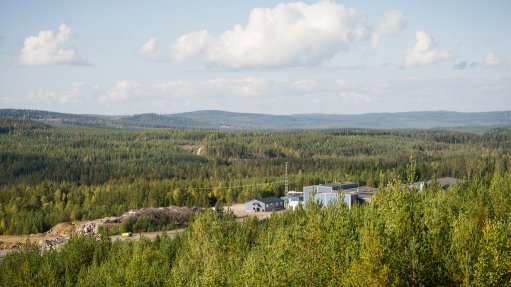
The Woxna graphite mine in Sweden.
TSX-V-listed Leading Edge Materials has signed a nonbinding letter of intent (LOI) with private Swedish company Graphmatech, defining a pathway to form a binding joint venture (JV) between the companies to produce graphene at the Woxna graphite mine.
Announcing the LOI on Wednesday, Leading Edge cofounder and director Mark Saxon said that the JV had the potential for another high value add product from Woxna graphite in addition to battery anode materials.
Woxna is a fully constructed mine, with all processing, waste management and infrastructure in place, but the site is currently held on a production ready basis to complete the research that is required to maximise the value of products.
Leading Edge Materials and Graphmatech have independently produced graphene as proof of concept from Woxna graphite. Following additional research, the JV envisages co-investment in the scale up of graphene production using Woxna graphite, to supply Graphmatech and third parties.
It is anticipated that the Woxna mine site will be the operating location, using proprietary graphite pre-treatment and exfoliation technology from Graphmatech.
The volume of material contemplated under the LOI is commercially significant to both parties, a media statement noted.
“Woxna, one of Europe’s few fully built and permitted graphite mines, is remarkably close to our research base in Uppsala. The proposed Graphmatech – Leading Edge Materials Joint Venture will construct a commercial graphite to graphene facility and provide Graphmatech with the secure, sustainable, competitively priced graphene supply we will need for our business in commercial graphene-containing products,” says Graphmatech CEO and cofounder Mamoun Taher.
Graphmatech has developed Aros Graphene, which prevents the agglomeration of graphene flakes. Aros Graphene can be mixed into metals, polymers and fluids without the loss of graphene’s thermal, mechanical and electrical properties.
Graphene is forecast to have a significant impact on materials engineering, as well as the power and electronics sectors; however industrial adoption has been slow since its first isolation in 2004 owing to problems caused by agglomeration.